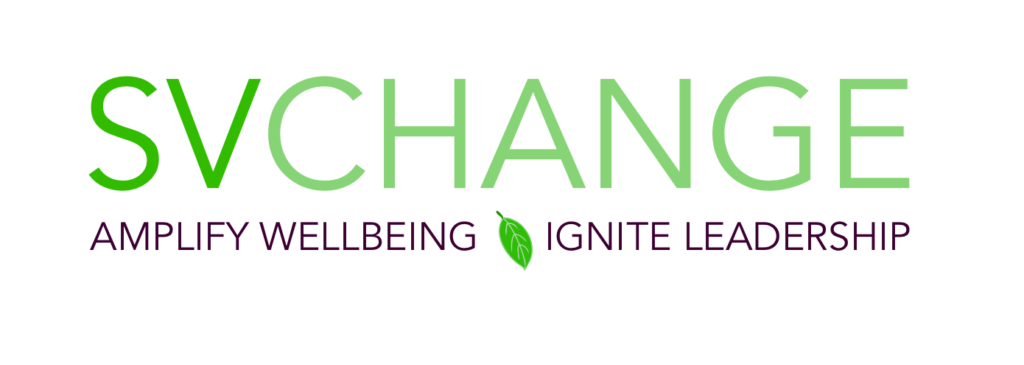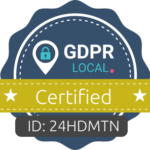Remote work is here to stay. A recent study projects that after the pandemic ends, 22 percent of all full work days will be take place from home, compared with 5 percent before. (Barrero, Bloom and Davis, 2020). Fortunately, during the COVID-19 pandemic, many businesses found that they could still get payroll out, and keep the cogs turning, without the need of the daily commute. As such, many will continue to operate remotely, in some form or fashion, once the virus is behind us.
While there are advantages for both the organization and employee to working from home, the remote environment also creates challenges. With every step forward, we also walk away from something that has sustained us.
 How do we keep employees engaged and connected, when there are not opportunities to see one another on a regular basis? Information is shared, and bonds are formed, by the countless causal interactions we make every day, in the hallway and lunch room.
How do we keep employees engaged and connected, when there are not opportunities to see one another on a regular basis? Information is shared, and bonds are formed, by the countless causal interactions we make every day, in the hallway and lunch room.
Employee engagement, networking and camaraderie are important for meeting a company’s strategic initiatives and the client’s needs. But these sorts of connections are also essential because we are human beings.
The Gallup organization identified the factors that contribute to engagement: 1) Basic Tools: Do I know what is expected of me at work? 2) A Sense of Belonging: Does someone at work seem to care about me as a person? 3) Sense of Contributing: Do I receive recognition for my good work? Finally, 4) Professional and Intellectual Resources: Does someone care about my development? (Harter, Schmidt and Keyes, 2003).
If we are going to provide mentoring and training, build effective teams, encourage connection and otherwise position our employees for success and flourishing, we are going to do it in new ways.
The particular strategies an organization adopts will depend upon the specific goal. Further, not every approach will work with every individual or company. I am fortunate to work for an organization treats these matters as a priority. MCNC provides broadband, cybersecurity and other services for education, libraries, health care, public safety, and other community anchor institutions throughout North Carolina. We have assembled an “engagement team,” a group of individuals across the organization, to consider and test which approaches might be the best fit for us. The possibilities are endless.
In addition to the specific items our team is considering, an informal poll of several coaches and consultants (see the references, below) generated the following strategies your organization can try, to meet your specific goals and needs:
Formal Meetings
- Celebrate Successes With the Individual/Team. Work can be so hectic and task-focused, that we can lose track of the good things we do. At meetings, reserve a few minutes to celebrate and debrief successes. Celebrate so your people know that what they do matters. Debrief because it empowers them, and lets the team explore ways to extend their strengths into new areas.
- Communicate Successes Across the Organization. Companies are getting better at reporting when good things happen, and even who was involved. However, take your time with it. Practice public savoring and communicating why the success happened and why it matters. Point it out at staff meetings, and in company communications.
Create Opportunities to Connect
- Discuss Resources on Business Skills. Before team meetings, send out a related TED talk, or other resource that illustrates a point or business skill that you find important. In addition to providing a valuable work related resource, it creates opportunities to connect, engage and get to know one another.
- Discuss Resources on Work-Life Integration. We are more than automatons creating gizmos and widgets. In addition to resources on business matters, share videos and articles on work life integration and set up a time to discuss.
- Virtual Coffee Breaks. So much of what we miss when working remotely are the causal, day-to-day connections that build connections and provide opportunities to share ideas. Occasionally plan short video meetings with small groups over a coffee or tea to talk about ways to make the business better or more effective, or just to connect. Let them be cross-functional and unstructured.
- Meet Your Co-Workers. Provide a platform for your team members to lead TED-style talks on things they care about: Cooking; Gardening; A chance to play their guitar. It is amazing what you will learn about one another. And don’t wait for volunteers. People might not realize how special they are. Do you know something about a coworker that is interesting or unique? Ask them to present.
- What Does That Guy Do? What is it that the person in the next cube actually does anyway? Web forums are a great way to facilitate knowledge-sharing within the company. Set up an internal broadcasts where employees can share ideas and ask questions.
- What Makes You Tick? Between Myers Briggs, the VIA, StrengthsFinder, and others, there are numerous personality and strengths tests available that can offer insight into who we are, and how we work best. Occasionally send out a link to one of them and schedule time to get people talking about who they are. There are multiple free surveys available through the University of Pennsylvania, found here.
- On Boarding and Introductions. How can we get to know new hires and help them feel they are part of the team? Consider hosting a quarterly meeting online where new hires can introduce themselves to the rest of the team. Invite them to create a few PowerPoint slides that highlight who they are, and what they get excited about.
- Virtual Office Tour. Take turns using your laptop or phone to walk around your home to show off your office digs and give others a view of your work area.
- Look for Articles of Interest. As you are connecting remotely, listen for the personal and professional things that a co-worker might find of interest. When you see news, articles, or books they may like, forward it along.
- Celebrate Fifth Fridays. Every year there are several months which have five Fridays instead of four. Use those a time to connect around fun activities: Play virtual bingo; have a pumpkin carving contest; share baby pictures, etc.
Utilize Online Tools
- “Get to Know You” Videos. Each week, post a five minute video with someone from the organization: anyone from the CEO to the intern. Ask her to talk about the tv shows she likes, what books she is reading, how she hates the cold. Employees could send questions beforehand. Someone could conduct an interview.
- Team Profiles. Ask team members to complete a profile and post them to a shared folder. In addition to how to reach you, your communication preferences, and your most productive time of day, add photos of the most important aspects of your life: pets, kids, hobbies, a photo of your workspace or home, etc. Include your favorite snacks, restaurants, or way you like to spend a Saturday night.
- Communication. Once a week or once a month, share a low tech newsletter with updates about the organization, jokes, or interviews with employees. There are hundreds of free webinars on working remotely, taking care of your wellbeing, home schooling, etc. put on by coaches and psychologists here and here.
- Electronic Suggestion Box. Develop a portal that allows employees to anonymously submit questions or suggestions.
Recreate Office Activities at Home. What are the things you miss from being in the office? There are creative way to continue to do many of them.
- Cookbooks. Can’t get together for annual holiday meals? Create a cookbook with favorite recipes including photos.
- March Madness. There is no need to give up your brackets just because you have gone virtual. Playful office rivalries can be even be enhanced with the use of online tools. Share memes, or make your team’s mascot your background on video calls.
- Free Throw Contests, Walking Groups. What are the things your team used to do in the office that you miss now that you are no longer together? Schedule a free throw contest over Zoom on your phone. Plan to walk together remotely at lunch. You can even bring the dog.
- Decorating Contests. You don’t need to be in the office to have a decorating contest. Consider alternatives like decorating a computer monitor, filing cabinet or company hat. Send the team the supplies they’ll need and ask them to take a picture of their creation.
- Virtual Happy Hour. Use an online meeting tool to establish monthly virtual meetings to just connect.
Leverage the US Postal Service. The US Postal Service can help you connect in fun ways
- Hand Written Notes. Give everyone postcards that say something like “you made my day” or “thanks for making a difference”. It feels good to receive a hand-written card, especially if it is one of acknowledgment.
- Share the Shark (or other prop). Some groups mail a stuffed shark, college mascot or other prop between team members. You could have criteria for “winning” the prop, or just send it to playfully tease college rivals. Bring it video conferences. Post funny photos with the it, etc. It is silly, but adds a needed playfulness into our every day.
- Care Packages. Many companies have promotional items (stress balls, beach towels, mugs, etc.) in the office that they could share with the team. It is also a thrill to get cookies or other treats as a simple reminder that you are thinking of them.
Other
- Well-Being Budget. One Raleigh law firm designated a certain amount of money for each employee that they could spend on anything that contributes to their well-being. It could go toward buying a bicycle, or their body-weight in cheese cake.
- “Kotter” Committee. Have a few people specifically pay attention to team members who you have not heard from, or may be falling between the cracks, and to reach out to them and “welcome” them back.
- Engagement Team. MCNC’s engagement team has been wonderful. In a more “traditional” work environment, this work is important. However, it is even harder to keep everyone connected when working remotely. It is a bigger task than one person. Consider putting together a group of people to discuss and share ideas for the right ways to keep the people in your organization engaged, and so that they recognize the value of what they do. You will not regret it.
These are just a few possibilities. Not every strategy will be the right fit for your organization. Play with the ideas. Mold them. Survey your team, whether formally or informally. In the end, have fun with it. The gestures you make do not have to be a huge to have a huge impact. Just keep reminding the people on your team that they matter and that they are making a difference.
References
This article originally appeared on Psychology Today
In addition to the team at MCNC, special thanks to the following coaches and consultants for their ideas: Lisa Sansom, Marie-Josée Shaar, Margaret Hudson Greenberg, and Kathryn H. Britton.
Barrero, J. M., Bloom, N., and Davis, S.J. (2020) “Why Working From Home Will Stick”, Becker Friedman Institute, Working paper No. 2020-174. https://bfi.uchicago.edu/wp-content/uploads/2020/12/BFI_WP_2020174.pdf
Harter, J. K., Schmidt, F. L., and Keyes, C. L. M. (2003) Well-Being in the workplace and its relationship to business outcomes: A review of the Gallup studies. In Keyes, C. L. M., & Haidt, J. (Eds.), Flourishing: The positive person and the good life (p.205-224). American Psychological Association. http://media.gallup.com/documents/whitePaper–Well-BeingInTheWorkplace.pdf
Image Sources
“With the children on Sundays, through eye-gate, and ear-gate into the city of child-soul” (1911) Part of the Internet Archive Book Images, in the Public Domain.
Home Office by Alexandra Koch placed on Pixabay in the Public Domain
Work Remote interview of the author by Senia Maymin generously provided by Silicon Valley Change.
Happy People (Wikimeida) is licensed under the Creative Commons Attribution-Share Alike 4.0 International license.











